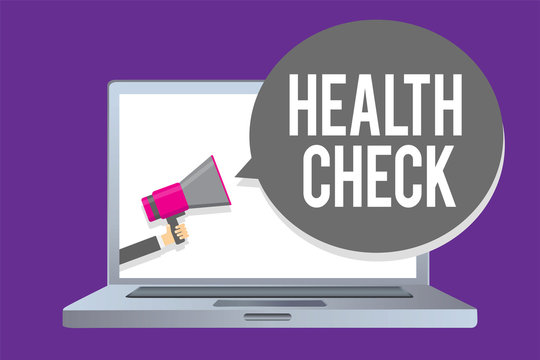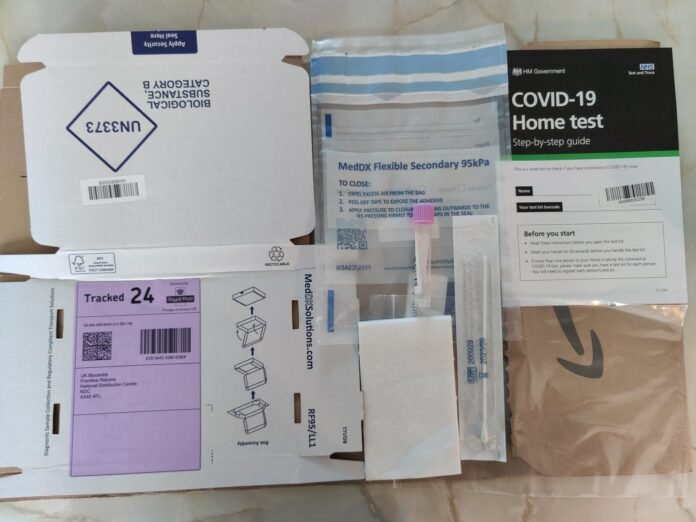The Benefits of At-Home Testing
At-home testing is becoming increasingly popular, especially during the COVID-19 pandemic. With the convenience and accessibility of at-home testing, many individuals are now able to take control of their health and receive medical attention from the comfort of their own homes.
Here are some of the benefits of at-home testing:
Convenience
At-home testing offers convenience and flexibility that traditional lab tests do not. With at-home testing, individuals can test themselves at any time, without having to visit a medical facility. This is especially helpful for individuals who have busy schedules or live in remote areas.
Moreover, at-home testing can save time as individuals do not need to wait in long lines or schedule an appointment with a doctor. Instead, they can simply order a test kit online and receive their results within a few days.
Cost-Effective
At-home testing can also be cost-effective compared to traditional lab tests. With at-home testing, there are no doctor fees, and test kits are often affordable and readily available. This makes it easier for individuals to monitor their health without breaking the bank.
Privacy
At-home testing offers a high level of privacy and confidentiality. Individuals do not need to leave their homes to take a test, and their results are often delivered online or via mail. This eliminates the need for face-to-face consultations with healthcare providers and ensures that individuals can receive medical attention without worrying about their privacy being compromised.
Overall, the benefits of at-home testing are numerous and can greatly improve an individual’s ability to monitor and manage their health. In the following sections, we will explore the different types of at-home testing available and provide guidelines for taking at-home tests.
Types of At-Home Testing
There are different types of at-home testing available for individuals to monitor their health and detect various medical conditions. In this section, we will explore the two main types of at-home testing: COVID-19 testing and self-ordered lab tests.
COVID-19 Testing
COVID-19 testing is one of the most popular forms of at-home testing, especially during the pandemic. According to the Centers for Disease Control and Prevention (CDC), individuals should take at-home COVID-19 tests immediately if they experience symptoms or have been exposed to someone with the virus.
There are different types of COVID-19 tests available for at-home use:
Antigen Tests
Antigen tests are used to detect the presence of the COVID-19 virus in an individual’s body. These tests are designed to detect specific proteins on the surface of the virus and can provide results within 15 minutes.
Molecular Tests
Molecular tests, also known as PCR tests, are used to detect the genetic material of the COVID-19 virus in an individual’s body. These tests are highly accurate and can provide results within a few days.
Nasal Swab Tests
Nasal swab tests are used to collect a sample from an individual’s nose to detect the presence of the COVID-19 virus. These tests are easy to administer and can be done at home with a test kit.
The CDC also recommends repeating the test 48 hours later if the first test is negative and consulting a healthcare provider if symptoms persist or worsen. Additionally, taking a COVID-19 test can be helpful before attending events or visiting family and friends.
Moreover, free at-home COVID-19 tests](https://www.covid.gov/tests) are available this winter, and if the test is positive, individuals should follow CDC guidelines for isolation and consider available treatment options. The [Test-to-Treat program also offers testing and treatment at certain locations.
Self-Ordered Lab Tests
Self-ordered lab tests are another form of at-home testing that allows individuals to monitor their health and detect various medical conditions. Two popular self-ordered lab test providers are Labcorp OnDemand and EverlyWell.
Labcorp OnDemand
Labcorp OnDemand is a diagnostic lab that offers over 40 self-ordered lab tests for various health categories. Customers can order lab tests online without a doctor’s visit, provide their samples, and access their results online. The lab is trusted by doctors and offers fast, accurate results.
EverlyWell
EverlyWell provides at-home health testing with shipping times of 2-8 business days and results available within 5 business days, except for COVID-19 tests which have results available within 24-48 hours. Customers may experience shipping delays and should contact customer care if there is no tracking movement for 5 days.
Overall, at-home testing provides individuals with a convenient and cost-effective way to monitor their health and detect various medical conditions. In the following section, we will provide guidelines for taking at-home tests.
Guidelines for Taking At-Home Tests
Taking an at-home test can be a simple and convenient way to monitor your health and detect various medical conditions. However, it is important to follow certain guidelines to ensure accurate results and proper medical attention. In this section, we will provide guidelines for taking at-home tests.
Read Instructions Carefully
Before taking an at-home test, it is important to read the instructions carefully. Each test kit comes with specific instructions on how to collect and handle the sample, as well as how to interpret the results. It is important to follow these instructions to ensure accurate results.
Choose a Reliable Test Provider
It is important to choose a reliable test provider when taking at-home tests. As mentioned earlier, LabCorp OnDemand and Everlywell are two popular self-ordered lab test providers that offer fast and accurate results. It is important to choose a provider that is trusted by doctors and has a good reputation for accuracy and reliability.
Store and Handle Samples Properly
When collecting a sample for an at-home test, it is important to store and handle the sample properly. Samples should be kept at the appropriate temperature and handled carefully to avoid contamination. Following the instructions provided with the test kit can ensure that the sample is collected and stored properly.
Consult a Healthcare Provider
If the results of an at-home test are positive or if symptoms persist or worsen, it is important to consult a healthcare provider. A healthcare provider can provide proper medical attention and guidance on how to manage the condition. It is also important to follow the CDC guidelines for isolation and treatment if the test is positive for COVID-19.
Consider Shipping and Processing Times
When ordering an at-home test, it is important to consider shipping and processing times. Some test providers may have longer shipping or processing times than others, which can delay the receipt of results. It is important to plan accordingly and be patient while waiting for results.
Overall, taking an at-home test can be a simple and convenient way to monitor your health and detect various medical conditions. By following these guidelines, you can ensure accurate results and proper medical attention if needed.

Benefits of At-Home Testing
At-home testing provides individuals with a convenient and cost-effective way to monitor their health and detect various medical conditions. In this section, we will explore some of the benefits of at-home testing.
Convenience
One of the biggest benefits of at-home testing is convenience. Individuals can order test kits online and collect samples from the comfort of their own homes. This eliminates the need for doctor’s visits and can save time and money.
Cost-Effective
At-home testing is also cost-effective. Many self-ordered lab test providers offer tests at a fraction of the cost of traditional lab tests. This can be especially beneficial for individuals who are uninsured or have high deductibles.
Privacy
At-home testing also provides individuals with privacy. Some medical conditions may be embarrassing or sensitive, and at-home testing allows individuals to monitor their health without having to discuss it with their doctor or other healthcare professionals.
Early Detection
At-home testing can also lead to early detection of medical conditions. Early detection is key in many medical conditions and can lead to better outcomes and treatment options. At-home tests can detect various medical conditions, such as sexually transmitted infections, high cholesterol, and diabetes.
Monitoring Chronic Conditions
At-home testing can also be used to monitor chronic conditions. Individuals with chronic conditions, such as diabetes, may need to monitor their blood sugar levels regularly. At-home testing allows individuals to monitor their condition without having to visit their doctor or other healthcare professionals regularly.
Overall, at-home testing provides individuals with a convenient, cost-effective, and private way to monitor their health and detect various medical conditions. By taking advantage of at-home testing, individuals can lead healthier and more informed lives.

Drawbacks of At-Home Testing
While at-home testing provides individuals with a convenient and cost-effective way to monitor their health and detect various medical conditions, it also has some drawbacks. In this section, we will explore some of the drawbacks of at-home testing.
Limited Accuracy
At-home testing may have limited accuracy compared to traditional lab tests. This can be due to improper sample collection, mishandling of samples, or inaccurate test results. It is important to choose a reliable test provider and follow the instructions carefully to ensure accurate results.
False Positives and False Negatives
At-home testing may also result in false positives or false negatives. False positives occur when a test produces a positive result even though the individual does not have the medical condition being tested for. False negatives occur when a test produces a negative result even though the individual has the medical condition being tested for. It is important to follow up with a healthcare provider if test results are positive or if symptoms persist or worsen.
Lack of Medical Attention
At-home testing may also result in a lack of medical attention. Some individuals may rely solely on at-home testing and not seek medical attention if test results are positive or if symptoms persist or worsen. It is important to follow up with a healthcare provider if test results are positive or if symptoms persist or worsen.
Limited Testing Options
At-home testing may also have limited testing options. Some medical conditions may require more specialized testing or equipment that is not available for at-home use. In these cases, traditional lab tests may be necessary.
Shipping and Processing Times
As mentioned earlier, shipping and processing times can be a drawback of at-home testing. Some test providers may have longer shipping or processing times than others, which can delay the receipt of results. It is important to plan accordingly and be patient while waiting for results.
Overall, at-home testing provides individuals with a convenient and cost-effective way to monitor their health and detect various medical conditions. However, it is important to be aware of the drawbacks and limitations of at-home testing and to follow up with a healthcare provider if test results are positive or if symptoms persist or worsen.

Wrapping Up
At-home testing can be a convenient and cost-effective way to monitor your health and detect various medical conditions. In this article, we have explored the guidelines for taking at-home tests, the benefits of at-home testing, and the drawbacks of at-home testing.
While at-home testing provides individuals with many benefits, it is important to be aware of the limitations and drawbacks. It is crucial to choose a reliable test provider, follow instructions carefully, and consult a healthcare provider if test results are positive or if symptoms persist or worsen.
We hope that this article has provided you with valuable information on at-home testing. Be sure to check out our other great content for more health-related topics and information.
Common Questions
What is at-home testing?
At-home testing allows individuals to collect and test samples from the comfort of their own homes.
How accurate is at-home testing?
At-home testing may have limited accuracy compared to traditional lab tests. Follow instructions carefully.
Who can benefit from at-home testing?
At-home testing can benefit individuals who are uninsured, have high deductibles, or prefer privacy.
What are some drawbacks of at-home testing?
Drawbacks of at-home testing include limited accuracy, false positives/negatives, and lack of medical attention.
How do I choose a reliable test provider?
Choose a reliable test provider by researching their reputation, customer reviews, and accreditation.
What should I do if my at-home test is positive?
If your at-home test is positive or if symptoms persist or worsen, consult a healthcare provider for follow-up care.

